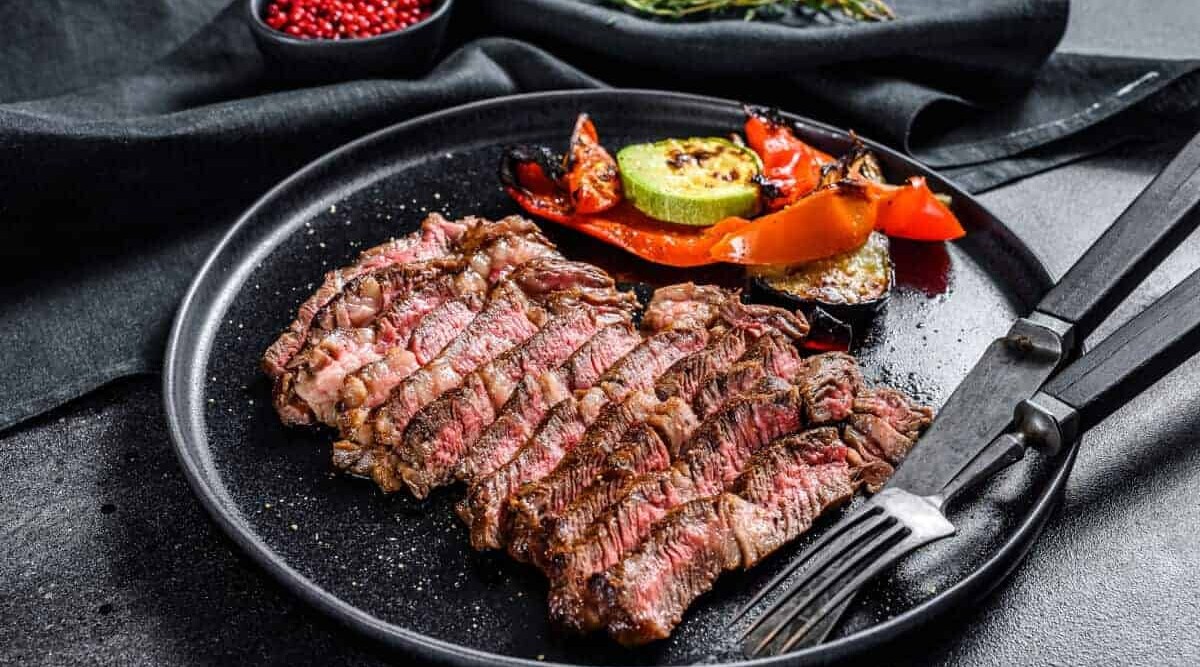
Here we have the Chuck Eye steak, an economy cut that rubs shoulders with the Ribeye, literally. This lesser-known steak packs plenty of punch in every sense and is one to watch out for.
If you’re a great steak lover, there’s no greater pleasure than a juicy Ribeye, unless of course, you can get something a lot like a Ribeye at a fraction of the cost…just like the chuck eye!
In this guide to the Chuck Eye, we will show you this great all-rounder that delivers both taste and tenderness in spades.
We answer what it is, how it’s butchered, what you can expect it to taste like, and of course, our detailed foolproof guide to cooking it right the first time.
Let’s get to it.
Jump to:
- 1 What is Chuck Eye Steak?
- 2 Where Does Chuck Eye Steak Come from on the Cow?
- 3 Other Names for the Chuck Eye Steak
- 4 Flavor, Texture, Fat Content and Tenderness
- 5 Typical Uses
- 6 Nutrition
- 7 Buying Chuck Eye Steak
- 8 Where to Buy Chuck Eye Steak Online
- 9 Average Price
- 10 Portion Size: How Much Chuck Eye Steak Per Person?
- 11 How to Prepare it for Grilling or Smoking
- 12 How to Cook Chuck Eye Steak on a Grill or Smoker
- 13 Three Best Chuck Eye Steak Recipes from Around the Web
- 14 Conclusion
What is Chuck Eye Steak?
The Chuck Eye is the underdog of the steak world, and it comes from the poor heritage of the Chuck primal. But with no prowess or pedigree, it delivers a lot for not a lot of money.
Here’s a quick video overview of how to butcher and cook the chuck eye steak from a skilled butcher:
Essentially, the Chuck Eye steak is a continuation of the Ribeye into the chuck primal. Maybe not the best steak for grilling, but close to it, and one you should try. We think you’ll love it!
It is cut an inch thick and looks like a mini Ribeye with similar marbling. It also tastes like a Ribeye with its full flavor.
Plus, it can be cooked like a steak, unlike many other cuts from the chuck primal.
Where Does Chuck Eye Steak Come from on the Cow?
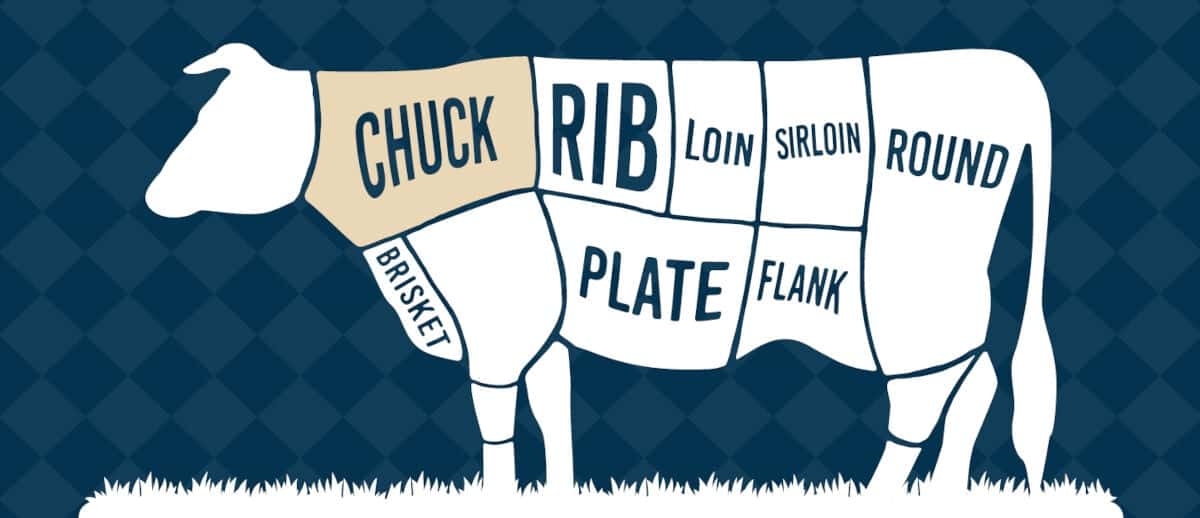
The beef Chuck Eye steak comes from the chuck primal, which is the shoulder region.
The Ribeye is cut from the 6th to 12th rib of the cow, and the Chuck Eye is cut from the 5th.
You’ll know from our beef cuts article that the shoulder and neck muscles are one of the hardest working parts of the cow, and as such, the muscles are generally tough.
The Chuck Eye, however, is positioned at the rear portion of the shoulder, which is relatively dormant, and in turn, beautifully tender.
Other Names for the Chuck Eye Steak
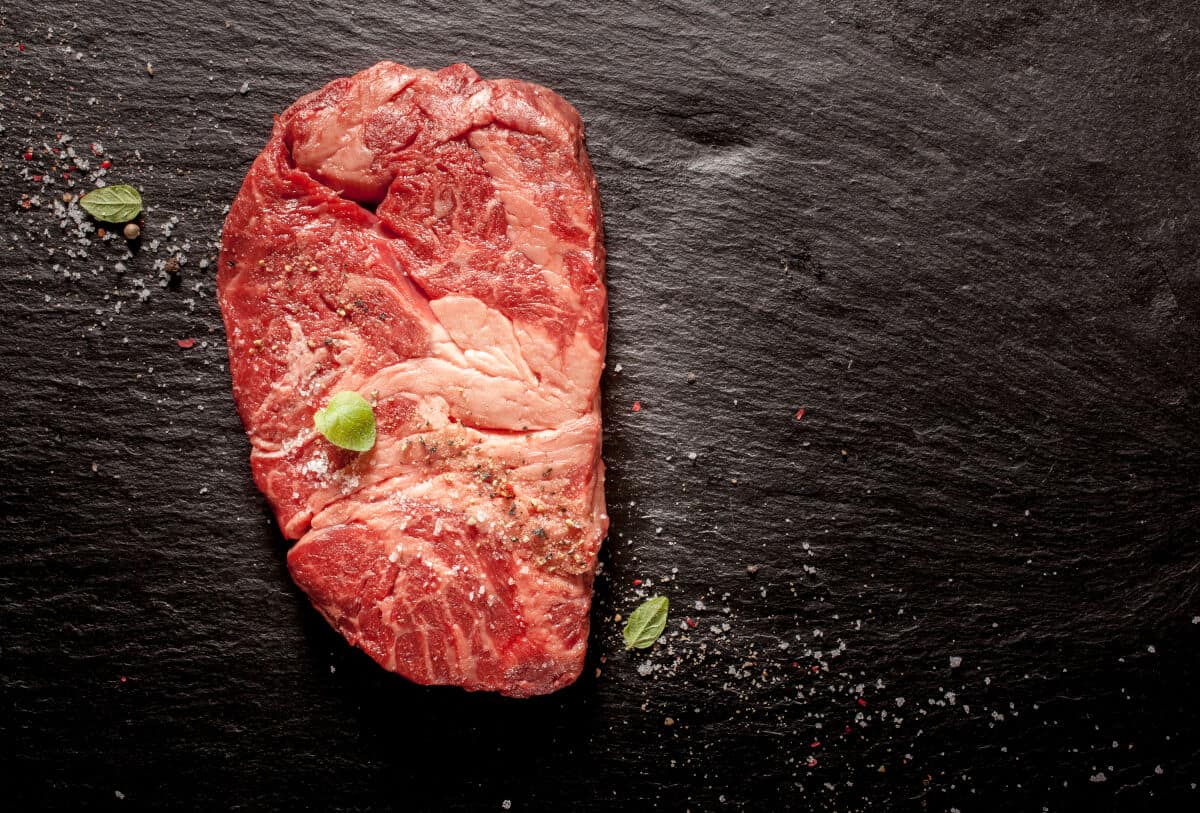
The Chuck Eye steak is somewhat of a dark horse in the meat world, a great steak that most know nothing about. Including butchers and historians alike.
It is unclear when this steak came about, but one story is that it has always been removed from the top end of the longissimus dorsi, and kept by the butchers for themselves.
The reason being that there are usually only two per steer, and as they aren’t Ribeye’s, there was little value in selling them on the meat counter. This earned them the name ‘The Butcher’s Steak.’
Other names chuck eye steak is known by are:
Chuck Fillet steak — So-called to entice people to buy them and try the tenderness they offer.
Chuck Delmonico — Many steaks are labeled with the Delmonico name, which essentially is the name of a restaurant that serves great steaks. The Chuck Eye has appeared there, so we guess it’s as accurate a name as any other.
Chuck Tender steak — Another descriptive twist to try and get the steak away from its poor ‘Chuck’ heritage.
Flavor, Texture, Fat Content and Tenderness
The Chuck Eye steak is eager to please. With a rich, beefy, buttery taste just short of the intensity of a Ribeye, it’s a close second.
With it comes to exquisite tenderness, it falls just short of a Fillet. It comes in a tad firmer to the chew and with a thicker grain and texture. But nonetheless easy eating, it delivers on both fronts.
Typical Uses
Typically used as a traditional grilled standalone steak, the Chuck Eye steak is marketed as the poor man’s Ribeye.
However, due to its tenderness and big flavor, it has become famous for other beef-based dishes such as fajitas and beef skewers.
Nutrition
| Nutrition | Total Amount (Based on 3 oz Serving) | % Daily Value (based on 2000 calories/day) |
|---|---|---|
| Calories | 180 | 9% |
| Saturated Fat | 4.1 g | 23% |
| Sodium | 65 mg | 3% |
| Protein | 23 g | 46% |
| Iron | 2.4 mg | 15% |
| Zinc | 8.9 mg | 80% |
Buying Chuck Eye Steak
This steak is in short supply compared to other steaks, but unlike other cuts that hasn’t driven up the price.
Usually, only two steaks (sometimes four) are taken from each animal, so you may find them unavailable in the usual grocery stores. But when they are, snap them up!
A butcher will happily cut up and reserve them for you if you order them in advance. But, the easiest way is our favorite way, just order online and take all the hassle out of it.
Where to Buy Chuck Eye Steak Online
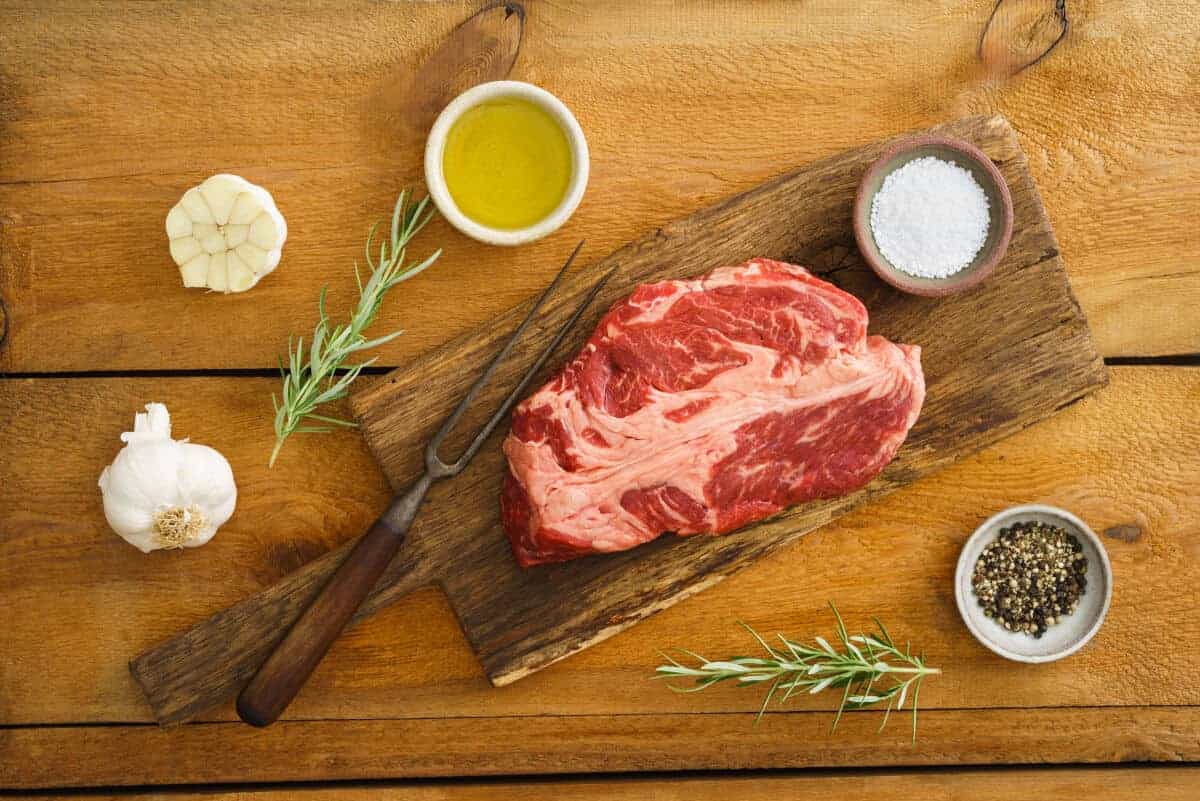
Placing your order on a trusted online meat market site offers you choice, ease, and quality. All the information is there for each cut, including where it came from, size and grade.
They will arrive vacuum packed and frozen so that you can be sure if they’re fresh and high quality.
Here are two online outlets that sell amazing quality steaks online:
Porter Road
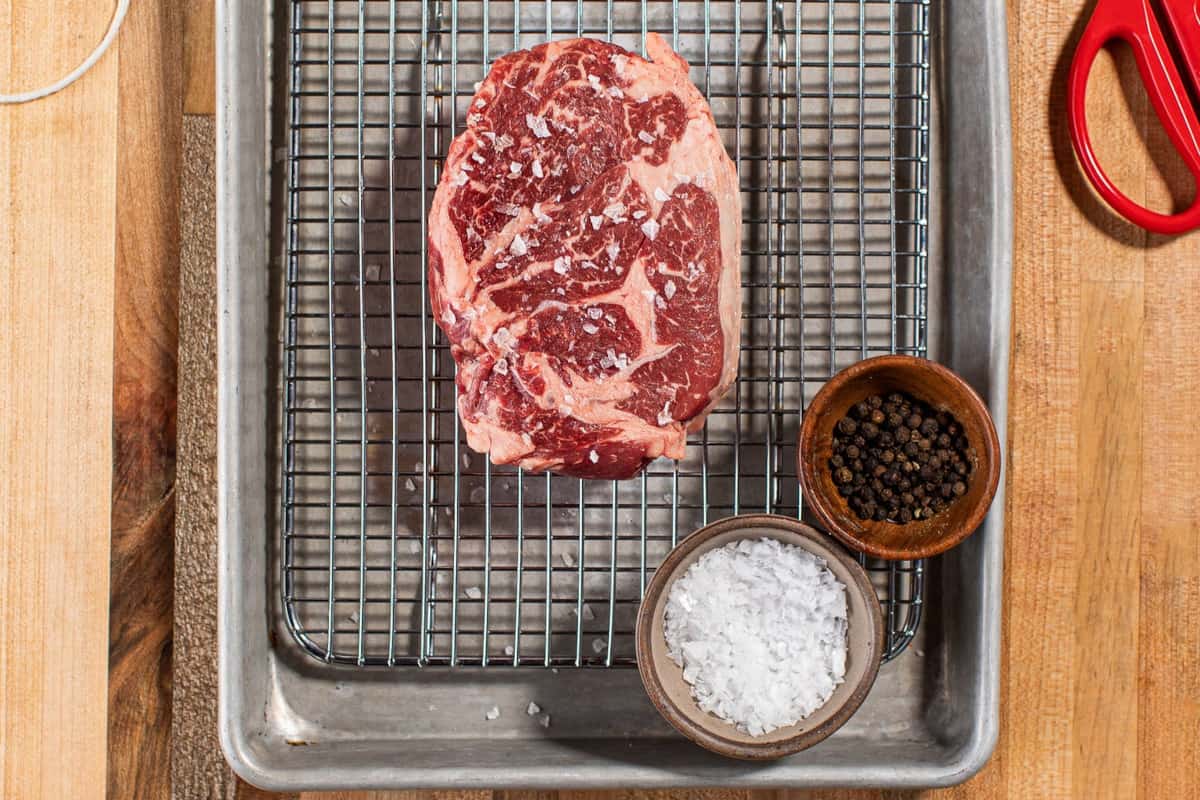
Porter Road’s 14 day minimum dry aged chuck eye steak comes in between 0.69 and 0.81 lbs.
With the same delicious texture, flavor, and marbling as ribeye, this steak provides an intense beefy flavor, is hormone and antibiotic free, and is pasture raised.
Crowd Cow
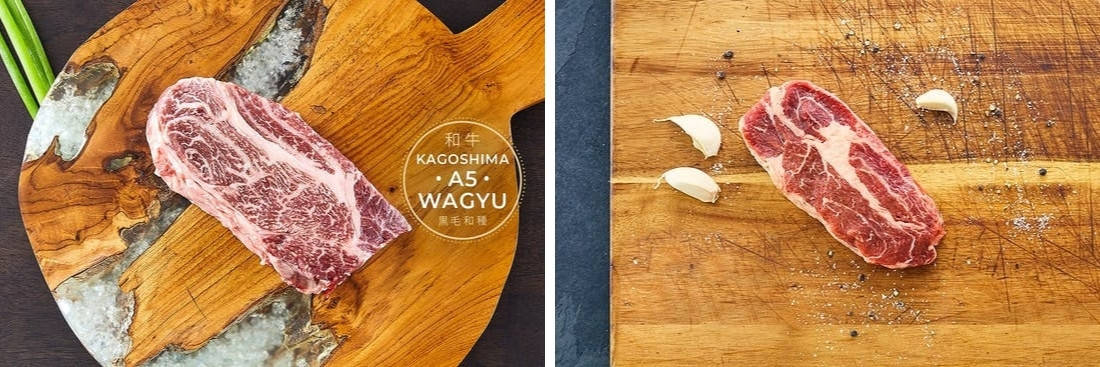
Crowd Cow’s standard chuck eye steak comes in at 6oz, and they describe it as “Cut from the 5th rib of each cow…takes after its Ribeye Steak cousins for tenderness and marbling.“
They also have a Japanese A5 wagyu chuck eye steak that has to be seen to be believed! They are highly marbled, incredibly tender, and they describe it as having a “well-balanced flavor profile with equal parts beefiness, Wagyu sweetness and umami goodness.” This cut comes in at 10oz weight.
Average Price
Despite its great flavor and incredible tenderness, this steak is a budget beater. Quality eating at economical prices is its specialty.
At the time of writing, the cost per-pound for a Chuck Eye was $14 to $17 per lb. Across online outlets.
Portion Size: How Much Chuck Eye Steak Per Person?
Weighing in on average at 8 oz. the Chuck Eye steak is the perfect size to serve one steak per person.
With a hearty side of fries or baked potato and vegetable trimmings, it will deliver a tremendously tasting and filling meal.
For those used to a good-sized Ribeye at 12 -16 oz. you can cook up two chuck eye steaks per person, and it will probably still come in as the better value option.
How to Prepare it for Grilling or Smoking
From almost all outlets online or otherwise, the beef Chuck Eye will come well-presented and ready to go with no trimming required.
Great as a standalone steak, it will taste great with just a good seasoning. But will equally take to a good marinade which its beefy overtones will stand up to no problem.
Some say it needs a marinade to tenderize it, but we say try it as it is first and adjust according to your taste preferences.
It will take to marinades, dry rubs, or any other creative topping you can think to add to it. With it being a cheap cut of meat, you can afford to experiment.
How to Cook Chuck Eye Steak on a Grill or Smoker
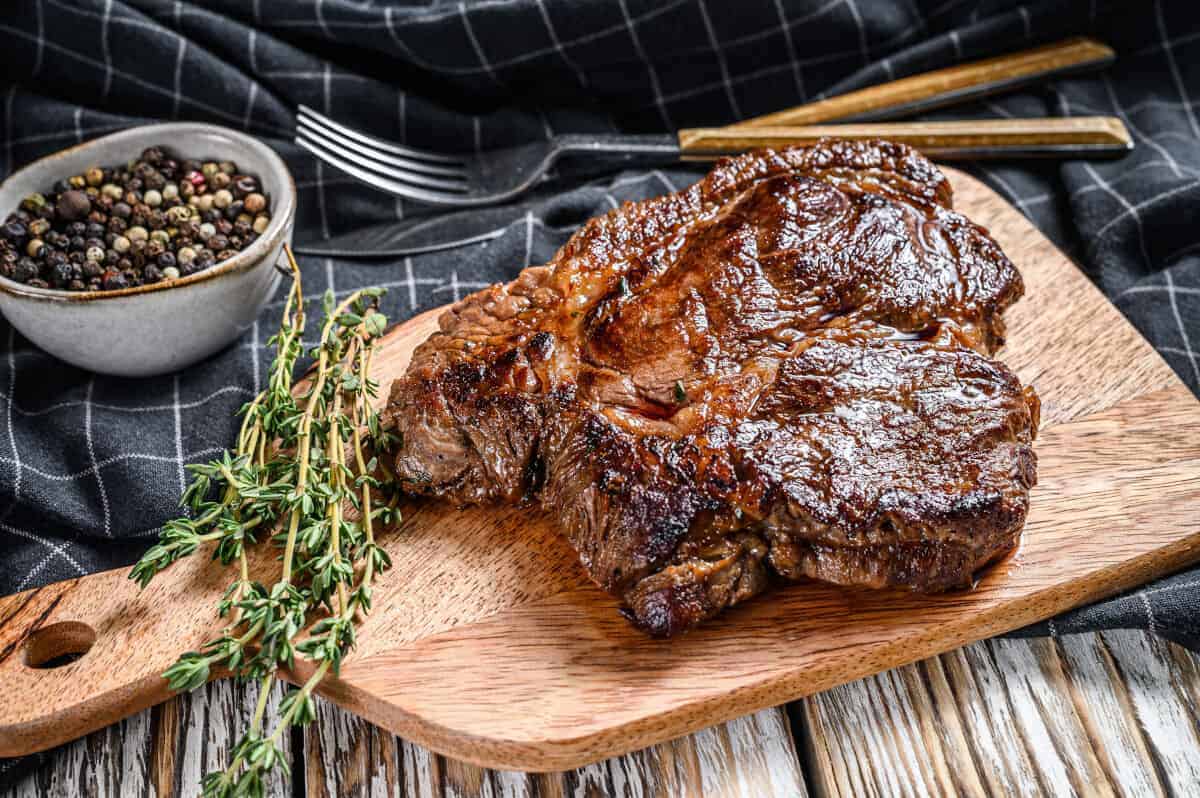
The Chuck steak can be cooked high and dry or using the reverse sear method.
The former of these cooking methods is our favorite way to cook the Chuck Eye due to it being ever so slightly too thin to make reverse sear the preferred way.
Here’s how you grill it:
- Remove your awesome Chuck Eye steak from the fridge and allow it to reach room temperature. Approximately 30 minutes or so.
- Choose your weapon of choice for the seasoning, either a simple dry rub or liberal salt and pepper would be our recommendation.
- Preheat your grill to anything from 450 F to 600 F, but set it up as a dual-zone cooker (coals to one side) so you can move the steak away from direct heat if necessary. Oil your grates with a kitchen towel.
- Sear your steak on the grill directly over the coals, turning it every couple of minutes.
- Using a meat thermometer, monitor your steak until it hits an internal temperature of 125F for medium-rare. (Check out our guide for tips on how to use an instant read meat thermometer correctly.)
- Remove from the heat, tent in foil and rest for 15 minutes.
- Remove from the foil and devour.
Three Best Chuck Eye Steak Recipes from Around the Web
Now that you’re drooling at the thought of this fantastic steak, let’s look at 3 of our favorite Chuck Eye recipes from around the web:
Food52 Maple soaked Chuck Eyes
Sometimes less is more. A simple rub of Maple syrup, soy and ginger, and you have a great tasting steak; it is as simple as that.
Click here for full recipe and instructions.
Sweet Humble Home Easy Steak Tacos
This recipe is perfect to see how versatile the Chuck Eye is. The secret to this tasty Taco is the mix of the lime marinade and Chipotle Chili powder.
Take yourself here for this tasty steak taco recipe.
Reasor’s Classic Rub Chuck Eye
Fancy a steak that is simple to prepare, tastes fantastic, and will have you cooking it again and again? This is it.
The secret to the great taste is the combo of garlic and cracked coriander seeds.
Follow this link for a classic rubbed chuck eye recipe.
Conclusion
I guess you could say this steak needs no conclusion. It’s a clear winner in our books. The value for money you get coupled with its succulent texture and taste bud-taunting beefy flavor means we know you will love it too.
What we do want to address is the Chuck Eye’s “poor man’s ribeye” nickname. We think it’s about time this steak became a superstar in its own right.
So, get gloating in the comments about your experience of these great tasting underdogs, and we’ll see you there.


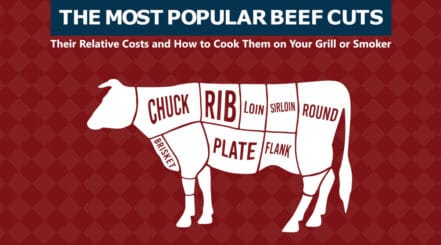
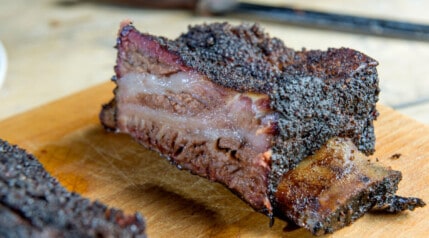
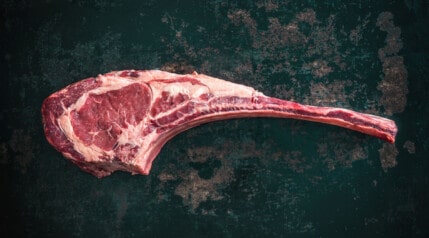

Well, you’ve gotten me hooked on Chuck eye steak! My husband picked one up since it was the only one that was remotely affordable at this time. It was $7.99/lb vs $12-$16/lb for the other steaks! I thought I would have to slow cook it to tenderize it, but read your blog and tried grilling it. What a wonderful cut! We cooked it medium rare. So nicely marbled and very tender! What a nice surprise. Thanks for sharing this secret! I’ve already bought more.
Thanks, Linda. I’m glad you enjoyed it 🙂
Thanks for this explanation! So much disinfo on chuck eye steaks being Chuck roasts cut into steaks and many supermarkets sell these cuts as Chuck eye steaks. My father was a butcher early in his life and would bring these home for dinner, due to their low price and high quality. I actually prefer them over ribeyes. It’s only every so often I find true chuck eyes in the grocery stores.